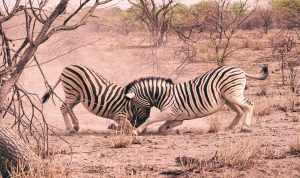Unit 3.7: Fitness in Biology
Understanding Fitness: Survival and Reproduction
Fitness in biology refers to an organism’s ability to survive and reproduce successfully in its environment. Individuals with beneficial traits, known as adaptations, have a greater chance of thriving and passing those traits to future generations. These adaptations can vary greatly, but they often happen at the microscopic level – involving DNA and proteins. Variations in DNA lead to the production of different proteins, which can help organisms respond more effectively to changes in their environment. 💪

Molecular Level Variation: The Key to Fitness
In the context of cellular energetics, some organisms are better equipped to harness and utilize energy than others. For example, one organism may have a more efficient way of hunting and consuming energy, while another may have the capability to perform aerobic respiration, whereas a different organism is limited to anaerobic respiration. These differences create selective pressures, where some individuals are more likely to survive and reproduce compared to others.
The Power of Variation
Variation at the molecular level is essential for organisms to adapt to different environments and survive challenges. Here are a few examples of how molecular-level differences contribute to fitness:
Example 1: Phospholipids in Cell Membranes
Phospholipids are a major component of cell membranes, helping to maintain their structure and function. Different types of phospholipids have unique properties, such as varying melting points, which means that certain types of phospholipids can help cells survive in different temperatures. For instance, organisms living in cold environments have more phospholipids with lower melting points to maintain membrane integrity and function in low temperatures. 💡
Example 2: Hemoglobin in Blood
Hemoglobin is a protein responsible for transporting oxygen in the blood. Different types of hemoglobin have distinct oxygen-binding properties. For example, fetuses, newborns, and adults each have different types of hemoglobin that help maximize oxygen absorption depending on developmental needs. This variation ensures that organisms can efficiently absorb oxygen at different stages of life. 🥶
Example 3: Chlorophyll in Plants
Chlorophyll, the pigment found in plants, plays a crucial role in photosynthesis by absorbing light energy and converting it into chemical energy. Different types of chlorophyll have different absorption spectra, which allows plants to utilize different parts of the light spectrum for photosynthesis. This flexibility enables plants to thrive in a wide range of lighting conditions. 🌱
The Role of Adaptations in Fitness
Organisms that are better equipped for survival and reproduction will pass on their DNA to subsequent generations more frequently than those that are less adapted. This leads to the next generation inheriting traits that provide a higher chance of survival and success. In this way, selective pressures can gradually shape the genetic makeup of a population over time, favoring traits that improve fitness.
Conclusion
Variation at the molecular level is crucial for survival, as it helps organisms respond to environmental changes and thrive in various conditions. Adaptations that enhance energy production, survival, and reproduction ensure that these beneficial traits are passed down to future generations, contributing to the overall fitness of the species.







